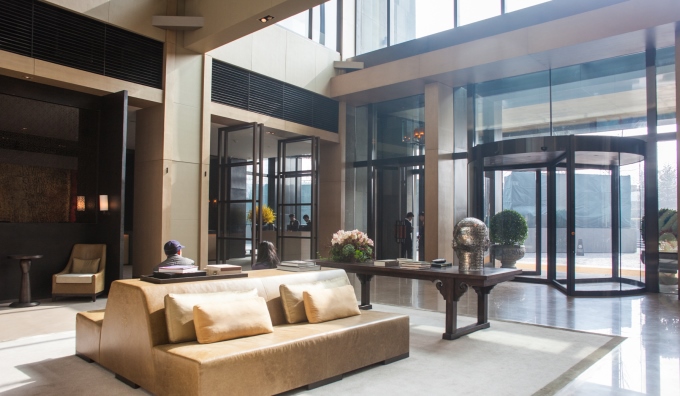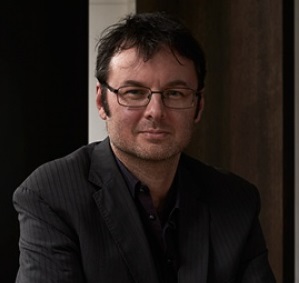Stewart Robertson
Luxury Designer: Stewart RobERTSON |
|||||||
 THE STYLE: The company says it is “committed to design responses that form a sense of place, grounding each project in a material and aesthetic landscape”. It is the bold use of material and the spatial quality of Robertson’s work (whether in vaulted ceiling or intimate spaces) that is gaining attention. CASE STUDY: Rosewood Beijing Principal designer Stewart Robertson and his team including design director, Veronique Terreaux, were commissioned by dynamic Hong Kong-based entrepreneur Sonia Cheng, CEO of Rosewood Hotel Group, to design the new Rosewood Beijing. The brief was to create sleek, sophisticated interiors for the hotel that capture the city’s rich cultural and artistic traditions. BAR Studio envisioned Rosewood Beijing as an entity with different areas expressing distinct personalities, yet harmonising overall. The idea was that In their passage through the hotel guests experience a continuous journey of exploration and discovery. Each element of the hotel’s design has been constructed to enhance this journey for guests. Robertson says: 'The architecture and design of Rosewood Beijing is like a brilliant series of photographs, composing and framing views and experiences for each individual guest'.  'To capture the vibrancy of the hotel, we used framing devices to focus guests’ attention on key images and features, whether the subject is the artwork, the cityscape or the culinary artists working in the show kitchens, the life-as-art framing techniques embody the hotel’s dynamic concept”. For the design of the 283-room hotel in the Chaoyang District BAR Studio drew inspiration from traditional Chinese painting and collaborated with leading Bangkok-based resort landscape architects PLandscape (PLA) t to use classical Chinese garden concepts. “Sons of Dragon” sculptures guard the hotel entry gate and evoke Chinese architectural principles of balance and symmetry. The Mongolian-sourced bluestone walls recall a mountain profile, while landscaping reflects classical Chinese garden concepts”. Inside the lobby, the designers have introduced subtle pavilion-like silhouettes throughout the soaring five-storey space, like a series of courtyards and rooms with Fine lacework metal screens subtly referencing Chinese patterns. Columns act as portals that connect the spaces. The traditional garden is a haven from Beijing’s frenetic streetscape. The Country Kitchen, restaurant is based on the idea of a local undercover marketplace. Its focal point is a bustling open kitchen with Rustic Chinese antique bricks. Artwork curated by Emily de Wolfe Pettit, founder of Beijing-based China arts consultancy, Arts Influential China played an important part in the overall design . For example, the hotel’s atrium features a towering painting inspired by the traditional shan shui landscape artworks originating in the Song dynasty (960-1279). Above this, calligraphy pays tribute to Qi Baishi’s iconic 1946 ink painting A Long Life, a Peaceful World, combining traditional painting and calligraphy.t Elsewhere the collection showcases a range of Beijing-based artists,. Within this dramatic space, BAR Studio has created the ambience of an inviting home with bespoke furniture, accessories, a fireplace and decorative screens forming a warm and intimate setting. Nine private dining suites – The House of Dynasties – have been set on the floor above. Here, the décor features rich, sumptuous design and an opulent mix of dark timber, and golden metal finishes, classically styled furniture with gold and silver toned upholstery in patterned leathers, rich velvets and silks. Delicate tracery screens are juxtaposed with soft gold wall coverings. The fine dining House of Dynasties has nine private dining suites decorated with an opulent mix of dark timber, and golden metal finishes, like an Emperors palace. Classically styled furniture has gold and silver toned upholstery in patterned leathers, rich velvets and silks. Delicate tracery screens are juxtaposed with soft gold wall coverings. In the rooms and suites the idea was to create sanctuaries, like private apartments. The contemporary furniture, mood lighting and accessories with subtle Oriental overtones all help to create an intimate feel. A contemporary interpretation of a Chinese console holds an eclectic collection of specially sourced books, accessories and objets d’art and the colour palette draws from calligraphy, with the emphasis on contrasts of light and dark. Robertson says: 'The idea of Beijing as a series of inner sanctuaries within a striking, impervious grey shell is central to the concept of the architecture and landscape of Rosewood Beijing. The design explores the notion of moving beyond the hard exterior to find an interior world that is something else; something unique, rich and unexpected”.
|
|||||||
|
Sail away from the safe harbor. Catch the trade winds in your sails. Explore. Dream. Discover. Mark Twain
|

|
BE THE FIRST TO KNOW
More Articles
- Alexander Lotersztain
- David Rockwell
- Dodd Mitchell
- Helen Green Design
- India Mahdavi
- Jacques Garcia
- Jaya Ibrahim
- Jean-Michel Gathy
- Kate McCoy
- Kit Kemp
- Kravitz Design Inc.
- Meryanne Loum-Martin
- Nicky Haslam
- Olga Polizzi
- Philippe Starck
- Pierre-Yves Rochon
- Serdar Gülgün
- Shawn Hausman
- Sir Terence Conran
- Stewart Robertson
- Virginia Fisher
- Yew Kuan Cheong
- Zaha Hadid
Show all





